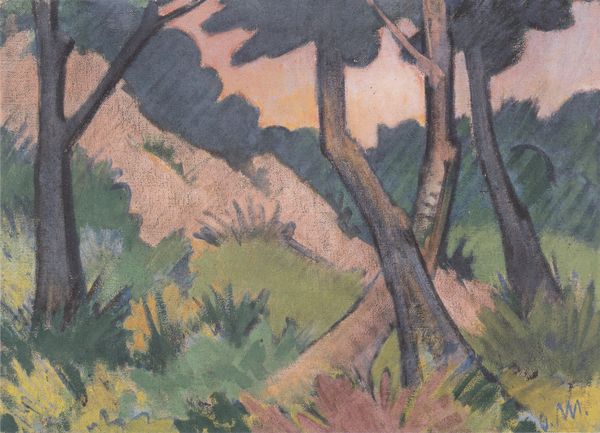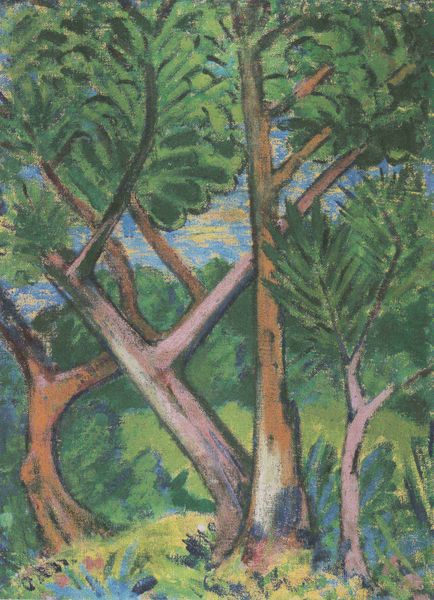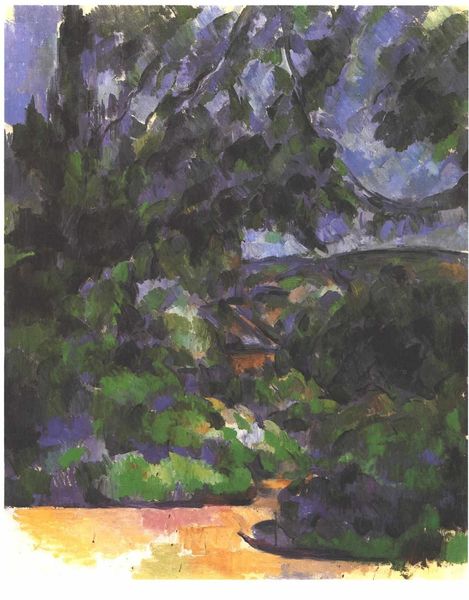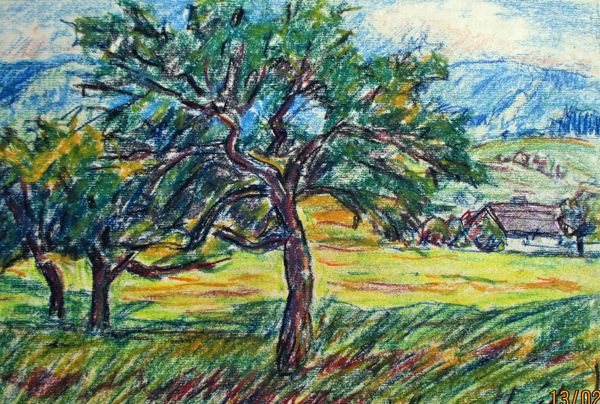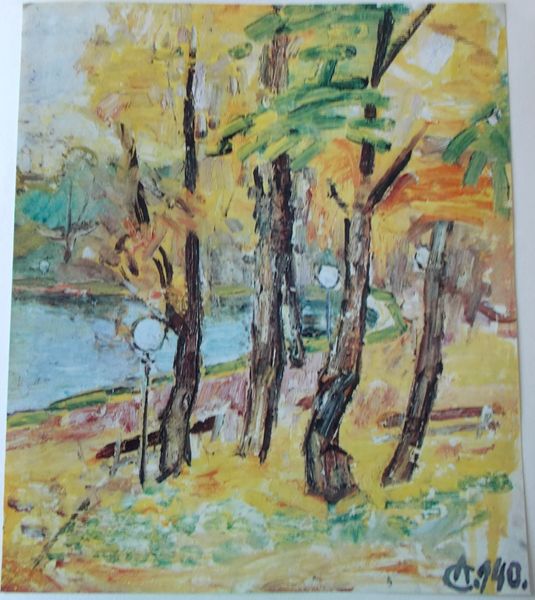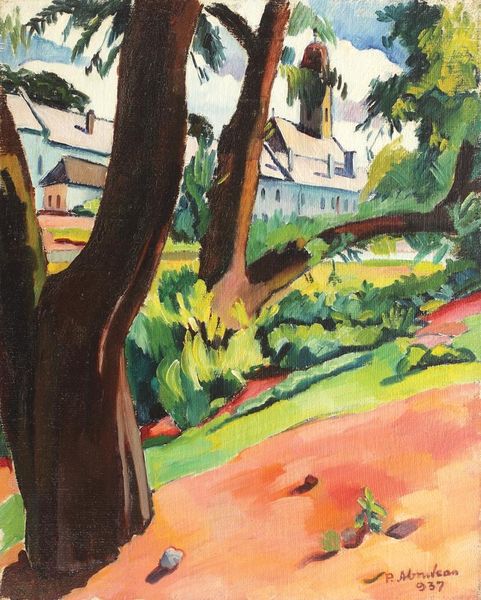
#
natural stone pattern
#
tropical
#
naturalistic pattern
#
abstract painting
#
nature colouring
#
fluid art
#
organic pattern
#
abstract nature shot
#
flower pattern
#
pattern in nature
Dimensions: 76.8 x 110 cm
Copyright: Public domain
Editor: Here we have Otto Mueller’s “Waldstück Mit Stein Und Gebüsch,” or "Forest Piece with Stone and Bush," created in 1919. It seems like a very abstracted landscape rendered in soft pastels. What’s your read on it? Curator: This work, for me, speaks volumes about the socio-political climate of post-World War I Germany. Consider that Mueller was part of Die Brücke, a group of Expressionist artists who aimed to challenge the status quo. How might the broken, almost fragmented rendering of the natural world reflect the fractured state of German society at that time? Editor: I guess the skewed perspectives and disharmonious color choices weren't just stylistic then? They represent more than simply how the artist perceived the environment? Curator: Exactly. Art doesn't exist in a vacuum. Mueller experienced the war firsthand. The anxieties, the disillusionment... these feelings found their way into his art, transforming traditional landscape painting into a vehicle for expressing deeper psychological and societal wounds. Notice how the forest seems almost suffocating. Editor: So, the vibrant yet uneasy colors could be conveying not just the forest, but the tension that was simmering in Germany? Curator: Precisely. Consider also the role of the art market. After the war, there was a yearning for both escapism and reflection. Artists like Mueller offered works that, while beautiful on the surface, subtly hinted at the underlying unease of the era. The expressionistic aesthetic catered to the desire for intense, subjective experience, mirroring the shifting emotional landscape of the German people. Editor: That's fascinating! I always looked at the Expressionists’ choices as mostly creative. But understanding that this landscape is a response to real events opens up new interpretive avenues. Curator: And that’s how we learn – questioning, re-evaluating, and situating art within its historical context. Always be curious about the broader social and political implications. Editor: Thanks! I'll definitely look at art through a new, wider lens now.
Comments
No comments
Be the first to comment and join the conversation on the ultimate creative platform.



